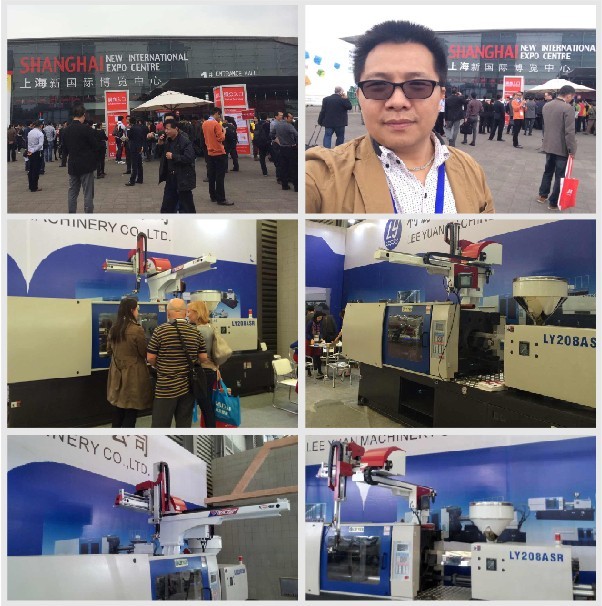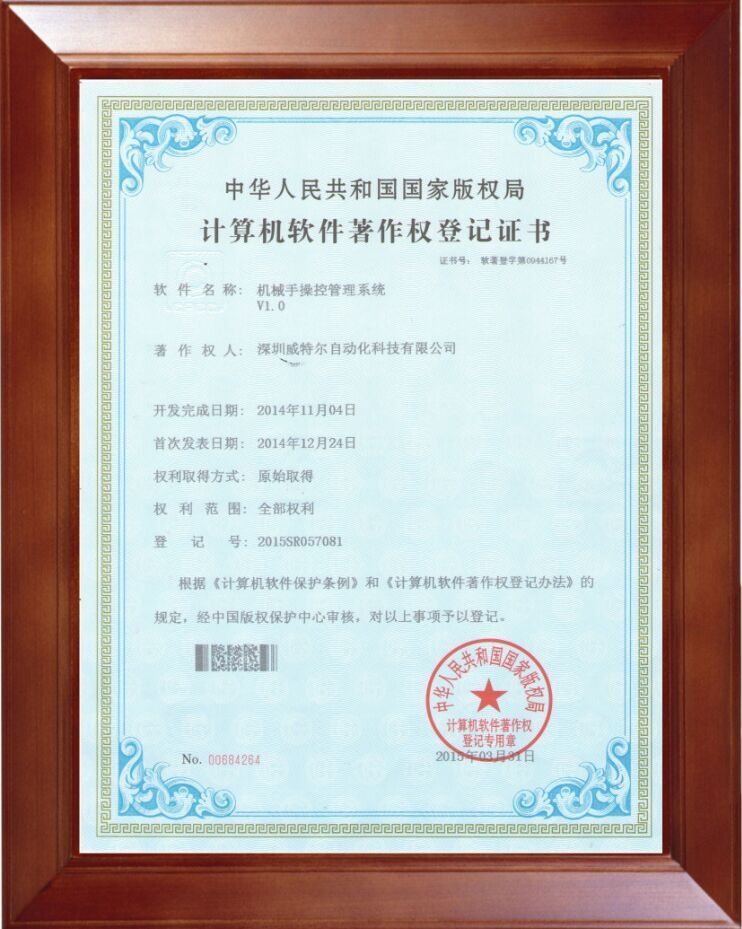

News
Analysis of the status quo of domestic manufacturing industry: robot application is the trend of the times
Release time:
2019/03/14
Recently, the online edition of Forbes magazine published an article saying that the biggest threat to China's economy is not from real estate and infrastructure bubbles, but from manufacturing bubbles. The original text says this:
China's real estate and infrastructure bubbles are very worrying, but these are only short-term challenges, and China should be able to get out of these difficulties. For the Chinese economy, the real threat is bigger and longer-term, and that is its manufacturing bubble.
By providing subsidies, cheap labor, and loose regulatory measures, China has been able to attract US companies to move their manufacturing operations to this market. Millions of US jobs have moved to China, and manufacturing has become the backbone of China's economic growth and prosperity. However, rising labor costs, concerns about IP theft, and delays in production time have prompted companies such as Dow Chemical, Caterpillar, General Electric and Ford to start moving part of their manufacturing operations from China to the US. in the market. Google also recently announced that its NexusQ streaming media player will be built in the United States, which will also put pressure on Apple to start emulating.
This is the manufacturing reflow that the United States has been claiming recently. Of course, the return of manufacturing industry in the United States is not to invest more manpower into manufacturing than China, but to use advanced modern manufacturing technology to save production and manufacturing costs, create more jobs, and promote modern manufacturing. development of.
The article points out that these technologies include robotics, artificial intelligence (BI), 3D printing, and nanotechnology, which have been slow to date, but are evolving at an exponential rate from now on, just as computing technology does. . Compared with the next generation of robots, the Chinese manufacturing and assembly business is like a child's house - in the near future, robots will become cheaper than humans. In fact, Foxconn, one of China's largest manufacturers, announced in August last year that it plans to install 1 million robots in three years to handle the work that Chinese workers are currently doing. Foxconn found that labor costs in China are becoming too high and too demanding. The world's most advanced car, the Tesla Roadster, is also being built in Silicon Valley, one of the most expensive areas in the United States. The reason why Tesla can afford this cost is that the company is using robots for assembly. Based on this, the bubble in manufacturing is the real worry for China.
This sounds a bit dangerous, because we often see experts and scholars saying that the Chinese economy will not make a hard landing. If we study it carefully, we will find that we are pinning more hopes on infrastructure investment. As the foundation of the national economy, the good operation of the economic index requires strong support from the manufacturing industry. At present, we have been emphasizing the acceleration of industrial upgrading, but the situation is still very pessimistic. From this aspect, these words are not dangerous.
Since China was freed from the Cultural Revolution in 1978, in the process of reform and opening up, with the rise of the private economy and the entry of foreign-invested manufacturing into China, the manufacturing industry in China's coastal areas has developed rapidly. The gap between the manufacturing industry in the inland and coastal areas and the economic strength of the entire region has gradually widened.
From 1998 to 2007, during this decade, the trend of foreign investment in China was gradually highlighted by the deepening of China's reform and opening up, especially after China's accession to the WTO, the policy of attracting foreign investment in China and the reduction of global manufacturing companies. Driven by the manufacturing costs and the strategy of occupying China and the Asia-Pacific market, a large amount of foreign capital has flooded into China, forming tens of thousands of foreign-invested and joint-venture manufacturing enterprises in China, as well as Taiwan-funded and Hong Kong-owned manufacturing enterprises. The Yangtze River Delta region has gradually become the leader of China's reform and opening up with the development of Pudong. Since the 30 years of China's reform and opening up, "MadeinChina" has become a world-famous export-oriented manufacturing enterprise in China's coastal areas.
These enterprises have fully utilized their low-cost advantages and gradually formed international competitiveness, winning a large number of OEM orders and becoming a production outsourcing base for international manufacturing.
It sounds brilliant, but supporting these companies to achieve low-cost advantages is a large number of low-cost labor from rural China and a specialized industrial cluster that has gradually formed in coastal areas, especially in IT products, toys, clothing, footwear and other industries. The world-famous "Made in China" seems to be limited by "manufacturing" itself. Take the car as an example. China is already the world's number one car country. There are also several major automobile factories in China, but the automobile factories produce foreign brands. We are just an assembly plant of a foreign car company. A Toyota car will bring in hundreds of supporting factories. The report has seen FAW's automobile production line, and the assembly line equipment was moved from abroad. It is a German automobile manufacturing plant.
And most of the Chinese manufacturing is assembly, but not all products can be assembled. Printers, fax machines, almost all Japanese brands, many are made in Shenzhen. Chinese companies have entered the industry for decades, but they cannot assemble qualified products. The same parts, let Chinese companies assemble, the quality will not work.
With the gradual disappearance of China's demographic dividend, the previous low-cost advantages have ceased to exist, and foreign-invested manufacturing companies that are constantly pouring into China due to low cost have begun to look for alternative markets. The recent withdrawal of Adidas from the Chinese market is a typical example. The insiders pointed out that the average monthly salary of the workers of the Adidas factory in Myanmar is 130 US dollars, which is more than 800 yuan, and in Suzhou, it is about 3,000 yuan. This may be the main withdrawal. the reason. Adidas is not the only multinational company to close its factory in China. As early as March 2009, Nike stopped its only footwear factory in Taicang, Jiangsu. According to the Nike Annual Report, in 2001, the production of footwear products accounted for about 40% of the Chinese factories, ranking first in the world. In 2005, this figure fell to 36%, and in 2010 it fell further to 34%. In contrast, Nike's production capacity in Southeast Asia has been leaping, from 13% in 2001 to 37% in 2010.
In the past 30 years, China's manufacturing industry has made some money by participating in the international division of labor with cheap resources and labor. However, with the development of the economy, the situation at home and abroad has undergone tremendous changes, and the manufacturing industry faces major challenges. In the short-term, it is close to the economic downturn, weak export, rising labor costs, and the outflow of orders. In the long run, it faces the high-end of the industrial chain and the advanced technology, and the low-cost production advantage of Southeast Asia and African countries. Obviously far-sighted. The old model is no longer working, but the new business has not yet formed. “Green and yellow are not connected” and “waiting for rice” may be a common problem faced by most manufacturing companies.
How to solve the problem
Robot solves labor cost pressure
Foxconn, the world's largest foundry company, has released a million "robots" program, which has attracted attention from outsiders. There are also questions about clapping and clamoring, but no matter how the plan of a million robots can be realized in three years, he has conveyed like us. One signal, the cost pressure of domestic manufacturing industry is indeed very large, and using robots to solve cost pressure will be the main trend in the future.
In terms of industrial robots, the main brands in the domestic market are ABB, Chuanyi and Yaskawa.
Contract energy management reduces energy consumption
Contract energy management, referred to as EPC in foreign countries, is widely known as EMC (Energy Management Contracting) in China. It is a new energy-saving mechanism based on market operation developed in western developed countries in the 1970s. Instead of selling products or technologies, contract energy management promotes a financial management approach that reduces energy costs. Contract energy management is a set of products provided by EMC through the signing of energy-saving service contracts with customers, including: energy audit, project design, project financing, equipment procurement, engineering construction, equipment installation and commissioning, personnel training, energy saving confirmation and guarantee. Energy-saving service, and a business operation mode that recovers investment and profits from the energy-saving benefits obtained by customers after energy-saving renovation. During the contract period, EMC shares energy-saving benefits with customers. After EMC recovers its investment and obtains reasonable profits, the contract ends and all energy-saving benefits and energy-saving equipment are owned by the customer.
Contract energy management can effectively reduce the energy consumption of enterprises. This energy-saving investment mode allows customers to upgrade their plants and equipment with future energy-saving benefits to reduce current operating costs; or energy-saving service companies to promise energy-saving projects, Or provide energy-saving services to customers by contracting the overall energy costs. The energy management contract is signed between the enterprise (user) and the energy-saving service company that implements the energy-saving project, which helps to promote the implementation of energy-saving projects. The essence of contract energy management is the energy-saving business method of paying the full cost of energy-saving projects with reduced energy costs.
China has launched pilot projects in Shandong, Beijing and Dalian through the World Bank Global Environment Facility project in the 1990s. At present, more than 20 provinces and municipalities have issued documents to encourage the development of energy-saving service industries. After more than a decade of development, especially since the State Council issued the article in April 2010, the new energy-saving model of contract energy management has made great progress. More people are known, more projects are being cooperated, and successful cases. More, the energy-saving service industry has expanded more than ten times. It can be said that the spring of contract energy management has really come.
Improving the technical level is the key
At present, the fundamental reason for the dilemma of China's manufacturing industry is still due to the low level of technology. Although China's manufacturing industry is now absolutely large, its level is not high, and low-quality, low-value-added products account for the vast majority. If China can significantly improve the quality of manufacturing products and enhance the structural level, the added value of unit products can be expanded several times. At present, the total manufacturing industry in China has surpassed that of the United States, but the per capita level is less than one-fourth of that in the United States. If the number of manufacturing employees is calculated, the average level is even lower. In the next 20 years, even if the total output of China's manufacturing industry remains unchanged, if the per capita level of the United States can be reached today, the wealth created by the manufacturing industry can quadruple, and the average annual growth rate can reach 7%. If we can reach the level of labor productivity in the US manufacturing industry today, we can turn it up a lot. This shows that the potential for China's manufacturing industry to continue to develop is still very large.
Of course, there are also some very good manufacturing companies in China. For example, in the top 100 manufacturing companies in the Chinese family wealth list that has just been released, some well-known companies such as Sany Heavy Industry, Great Wall Motor, and Midea Electric are very powerful. However, we still have a big gap in advanced control technology and overall technical level, which requires us to work harder.
Related news
2019-03-14
2019-03-14





![[Pu Daxi Ben] - Weitel Robot Project won 600,000 yuan from Shenzhen Science and Technology Commission [Pu Daxi Ben] - Weitel Robot Project won 600,000 yuan from Shenzhen Science and Technology Commission](https://omo-oss-image.thefastimg.com/portal-saas/new2023041417545479371/cms/image/4f67a616-22b8-4e42-80fb-0188250e15d4.png)



